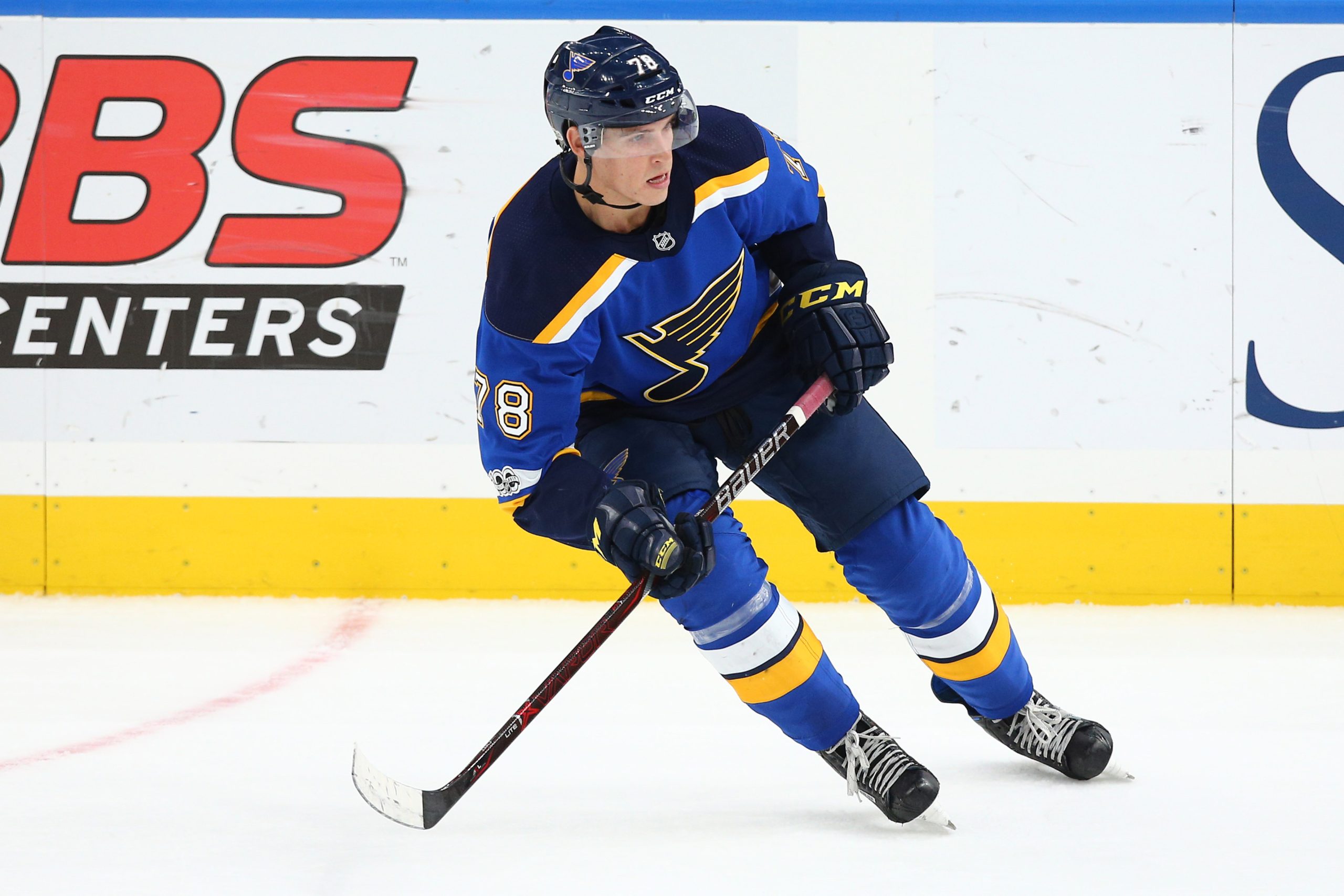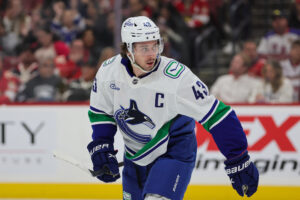Main Photo: Billy Hurst-USA TODAY Sports
NHL player development seems to always result in more questions than answers. How likely is it for a top pick to pan out? What makes a player a “steal”? Last Word On Hockey will be starting a new series on how to properly develop prospects from all different spots throughout the draft. This week’s piece involves draft picks in the back-half of the first round and how they were used early in their careers.
NHL Player Development Of First-Round Picks
In the span of 2005 through 2015, there were 84 total selections made between 16th overall and 30th overall on forwards playing in North America. Looking at all 84 forwards, they were split into different categories. Those categories were “Forwards Deemed NHL-Ready and Brought In Immediately When Ready,” “Forwards Near NHL-Ready and Brought In Immediately When Near-Ready,” “Forwards Rushed Slightly,” “Forwards Rushed,” “Forwards Forced,” “A Little Patience,” “Patience,” and “Too Much Patience.”
There were four forwards who fell into the seventh category, “too much patience,” on the list. Of those four players, two made their NHL impacts in their DY+3 seasons. Those players were Andrew Cogliano and Beau Bennett. Today, let’s look at Bennett.
In this piece, we will be using stats from eliteprospects (raw stats) and hockey-reference (ice time). Additionally, the analytics we are using are as follows: even-strength offence goals above replacement (EVO), even-strength defence goals above replacement (EVD), wins above replacement (WAR) and goals above replacement (GAR). Those analytics are from evolving-hockey (subscription required).
NHL Player Development Of Beau Bennett
Beau Bennett, drafted 20th overall by the Pittsburgh Penguins in the 2010 NHL entry draft, came out of the BCHL’s Penticton Vees organization. However, before joining the Vees, he played for the Los Angeles Jr. Kings 18U AAA team in his DY-1 season. With the Jr. Kings, he scored 25 goals and 33 assists for 58 points in 46 games, for 1.261 points per game. That ranked 19th amongst the 84 aforementioned forwards in DY-1 production. Joining the BCHL the following year, Bennett exploded with 41 goals and 79 assists for 120 points in just 56 games, for 2.143 points per game. That ranked sixth amongst those same 84 forwards in DY production, albeit in a weaker league than most.
After being drafted, Bennett would join the University of Denver in the NCAA for the next two seasons before getting his shot at the NHL level. As a freshman, Bennett scored nine goals and 16 assists for 25 points in 37 games, for 0.676 points per game. That ranked 70th amongst the 82 forwards still outside of the NHL in DY+1 production. The following season, he would play just 10 games, scoring four goals and nine assists for 13 points, for 1.3 points per game. That ranked 13th among the 70 forwards still outside the NHL in DY+2 production.
How Beau Bennett Was Used
Bennett, after that shortened sophomore campaign with Denver, would make the jump to the professional ranks. Bennett would play 39 AHL games, where he scored seven goals and 21 assists for 28 points. This was a strong stat line for a rookie. That would allow him to get a 26-game stint at the NHL level, where he averaged 12:18 time on ice per game. In the small role and in a small sample size of games, Bennett produced three goals and 11 assists for 14 points. Analytically, there was some underlying potential in his game. His EVO (2.6) was good considering how much he played, and his EVD (0.1) was very good for a rookie. Overall, his WAR (1.2) and GAR (6.4) were both very strong for a rookie.
In his second season of professional hockey, Bennett would see just 24 total games all year, with three in the AHL (one assist). At the NHL level, in the 21 games he played, he averaged 13:51 per game, an increase from his rookie season. With the bigger role, albeit in less games, Bennett scored just three goals and four assists for seven points. Analytically, he took a big step back, especially in EVO (-1.2). However, he managed to improve his EVD (0.4), which in turn assisted in keeping his WAR (0.1) and GAR (0.5) above replacement level.
Bennett Gets New Career-High In Games Played
In his third professional season, Bennett would see two AHL games (five assists!), but would play a large majority of his games at the NHL level. At the top level, Bennett saw 49 games, and he averaged 12:29 per game returning to about what he averaged as a rookie. With more games played, he still produced modestly, at best, with four goals and eight assists for 12 points. Looking at his analytics, his EVO (2.0) bounced right back, while his EVD (1.3) continued to improve. However, his WAR (0.3) and GAR (1.5) did not improve too much.
Since that third season, back in 2014-15, Bennett would play just 33 more games as a Penguin, scoring 12 points. In 2016-17, he would join the New Jersey Devils, and played there for just one season. In 65 games as a Devil, he scored 19 points, a career-high in games and points. But, in 2017-18, he would join the St Louis Blues for just six games, scoring no points. He played mostly in the AHL with the Chicago Wolves (57 points in 60 games). In 2018-19, Bennett went overseas and played with Dinamo Minsk of the KHL. But, he only played five games with one assist to show for. His final professional season, in 2019-20, he came back and played in the AHL with the Arizona Coyotes AHL affiliates, the Tucson Roadrunners. He scored 40 points in 55 games there. Bennett has since retired.
Overall NHL Player Development Of Beau Bennett
Bennett’s player development can’t be blamed on anyone in particular. Sure, maybe if he played more than just 13 minutes per game in Pittsburgh, he could have been better. But the problem is, he was injury prone. Remember the shortened sophomore season in college with Denver? He missed four games with wrist problems. Then, when evaluated, missed a chunk of time following wrist surgery. That was due to a ruptured tendon. Then, in 2013-14 (his second professional season) he broke his wrist in a game against the New York Islanders. He went on to miss four months. In 2015-16, he had several injuries that limited him to 33 regular season NHL games and one playoff game.
Looking back, scouts mentioned before he was drafted that Bennett had dual-threat offensive zone abilities, was a good skater, and had high level IQ and vision. However, the concerns regarded the fact he played in a weak league (BCHL), was undersized, and had issues with fitness. His injuries could have been due to his smaller stature and fitness concerns. Plus, his wrist injuries could have stunted his shooting and goal-scoring abilities. With the pre-draft concerns, plus the post-draft results with injuries, could the Penguins have done more with Bennett in regards to his physical health? Maybe. But it is impossible to say.
Who were some players who were available after Bennett was drafted in 2010? Those players included Kevin Hayes (24th overall), Evgeny Kuznetsov (26th), Charlie Coyle (28th), and Brock Nelson (30th) to name a few. All of those players have over 350 career points in the NHL, while Bennett had just 64 of his own.
Junior league stats via Elite Prospects, NHL stats via Hockey Reference, NHL analytics via Evolving Hockey






